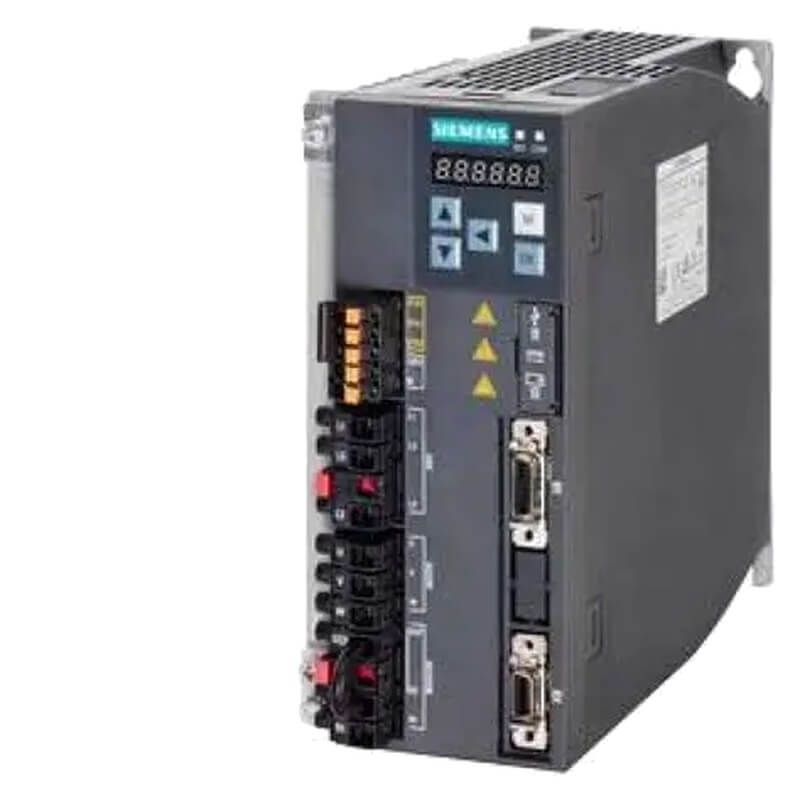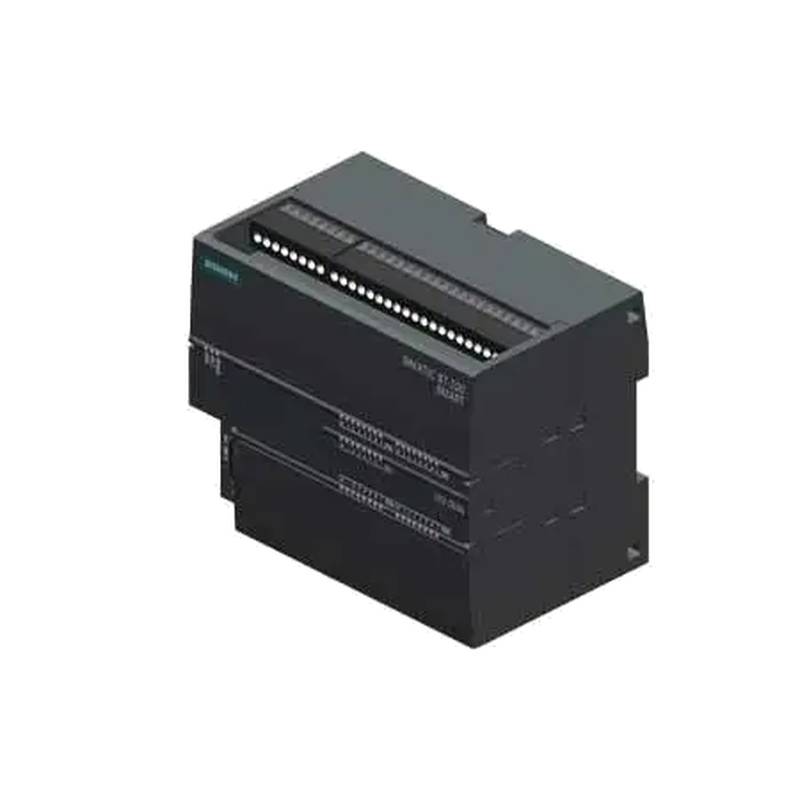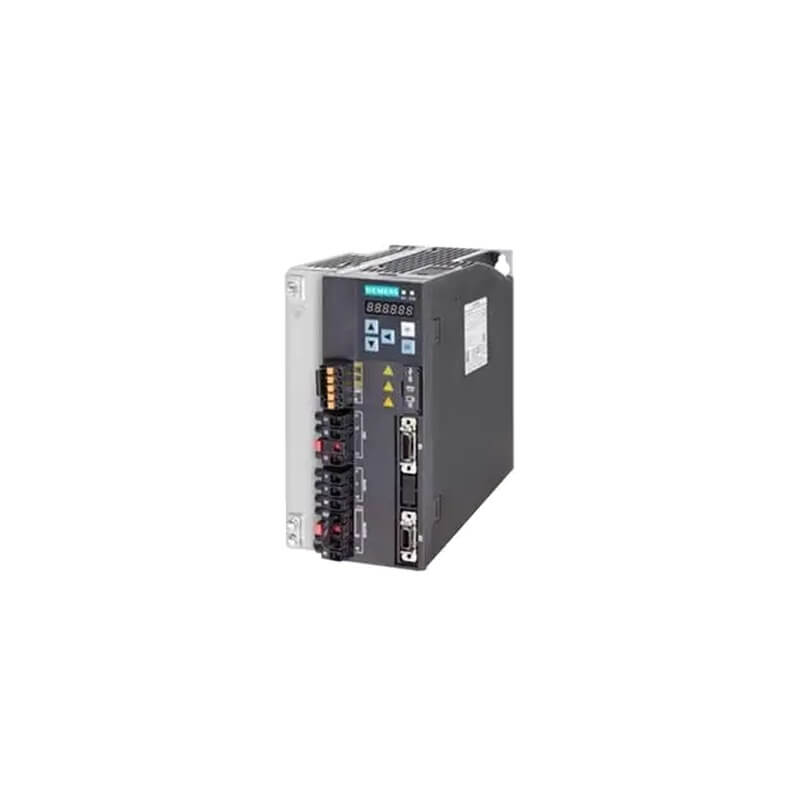
The Siemens 3RT2027-2KB40 Contactor Relay Combination with Timer Module 24VDC 32A 3NO is a robust and versatile solution for industrial control applications, offering enhanced functionality with its integrated timer. This device delivers reliable switching capabilities up to 32A, ensuring efficient operation in demanding environments. Its key advantages include simplified wiring, reduced panel space, and precise timing control, directly contributing to operational efficiency and system reliability.
Product Specifications
| Feature | Specification |
| :----------------------- | :---------------------------------------------- |
| Manufacturer | Siemens |
| Product Series | 3RT2 Sirius |
| Contactor Type | Power Contactor |
| Coil Voltage | 24V DC |
| Rated Operational Current | 32A (AC-3, 400V) |
| Number of NO Contacts | 3 |
| Number of NC Contacts | 0 |
| Auxiliary Contacts | 1 NO + 1 NC (integrated in timer module) |
| Timer Module Type | Electronic Timer (integrated) |
| Timer Functions | On-Delay, Off-Delay, Interval (configurable) |
| Timer Range | Adjustable, typically 0.1s to 100h (varies by model/setting) |
| Mounting Type | DIN Rail |
| Protection Rating | IP20 (housing) |
| Terminal Type | Screw Terminals |
| Standards Compliance | IEC 60947-4-1, IEC 60947-5-1, UL, CSA |
Core Features & Market Positioning
The Siemens 3RT2027-2KB40 distinguishes itself in the industrial control market through its integrated timer functionality, a significant differentiator from standard contactors. This combination unit streamlines control panel design by eliminating the need for separate timer relays, thereby reducing component count, wiring complexity, and potential points of failure. Siemens' Sirius line is globally recognized for its quality, durability, and adherence to international standards, positioning this contactor relay combination as a premium, reliable choice for critical infrastructure and automation projects. Its robust construction ensures longevity even under heavy operational loads and in challenging industrial settings. The 24VDC coil voltage is ideal for many safety-related control systems and low-voltage distribution networks.
Key Application Scenarios
This Siemens contactor relay combination is exceptionally well-suited for a wide array of industrial automation tasks. Its integrated timer makes it perfect for motor control applications requiring delayed start-up or shutdown sequences, such as conveyor systems, pumps, and HVAC units where precise timing is crucial for operational efficiency and equipment protection. It is also widely employed in power distribution panels for load shedding, energy management systems, and automatic transfer switch (ATS) logic, where timed switching between power sources is necessary. The 32A rating makes it suitable for medium-duty motor circuits and general power switching. Common search queries related to its application include "motor start delay Siemens," "timed control relay 32A," and "Siemens 24VDC timer contactor."
Practical System Integration Guidance
Integrating the Siemens 3RT2027-2KB40 into an existing control system is straightforward due to its standardized DIN rail mounting and screw terminal connections. Wiring the main power circuit involves connecting the load to the three normally open (NO) main contacts (terminals L1, L2, L3 for input and T1, T2, T3 for output). The 24VDC control voltage is applied to the coil terminals (A1 and A2). The integrated timer module typically offers flexible configuration options, allowing users to set various timing functions like on-delay, off-delay, or interval timing via small rotary switches or DIP switches directly on the module. Specific wiring for the auxiliary contacts (used for feedback or interlocking) on the timer module depends on the selected timer function and desired logic. Users should consult the Siemens technical documentation for detailed wiring diagrams specific to their chosen timer settings.
Operation and Risk Mitigation
Proper operation of the Siemens 3RT2027-2KB40 requires adherence to electrical codes and safety standards. The 24VDC coil voltage significantly enhances safety, reducing the risk of electric shock during installation and maintenance compared to higher voltage control circuits. Ensure the main power supply is de-energized before performing any wiring or maintenance. Overload protection for the connected motor or load must be provided by a separate overload relay or electronic motor starter, as the contactor itself primarily provides switching and not overload protection. In case of malfunction, common troubleshooting steps involve checking the 24VDC coil supply voltage, verifying control circuit integrity, and inspecting the main power connections for tightness. Referencing the device's manual for specific fault codes or diagnostic indicators is recommended if issues arise.
Scalability & Long-Term Value
The Siemens 3RT2027-2KB40 offers excellent scalability and long-term value within the broader Siemens industrial automation ecosystem. Its compatibility with other Sirius components, such as overload relays, circuit breakers, and communication modules, allows for easy expansion and integration into more complex control architectures. For systems moving towards digitalization and the Industrial Internet of Things (IIoT), this contactor can be part of a larger solution that includes Siemens' SIRIUS ACT HMI devices and industrial communication gateways, enabling remote monitoring and diagnostics. The inherent quality and proven reliability of Siemens products ensure a long operational lifespan, minimizing downtime and the need for premature replacements, thus providing a strong return on investment.
Frequently Asked Questions
What is the coil voltage of the Siemens 3RT2027-2KB40?
The Siemens 3RT2027-2KB40 features a 24VDC coil voltage. This ensures safe operation in many control circuits. It's ideal for systems already using low-voltage DC control power.
Why is 24VDC a common coil voltage for this type of device?
24VDC is widely adopted for control circuits due to its inherent safety advantages. It minimizes electrical shock hazards during installation and maintenance. Many safety relays and PLC outputs also operate at this voltage.
What are the advantages of using a 24VDC coil compared to AC coil voltages?
DC coils generally offer quieter operation and are less susceptible to voltage fluctuations affecting coil buzzing. The primary benefit remains enhanced safety for personnel working with control panels.
What is the rated operational current for the Siemens 3RT2027-2KB40?
This contactor is rated for 32A under AC-3 utilization category at 400V. This rating signifies its capability for switching squirrel cage motors. It is suitable for medium-duty motor control applications.
Does the 32A rating apply to all types of loads and voltages?
No, the 32A rating is specific to AC-3 motor loads at 400V. Different load types (e.g., resistive loads, AC-1) and voltages will have different permissible current ratings. Always consult the datasheet for full specifications.
Can this contactor be used for direct on-line motor starting?
Yes, it is designed for direct on-line starting of motors. However, it must be paired with a correctly sized overload relay for motor protection against overcurrent. The contactor provides the switching, while the overload relay provides protection.
What are the available timer functions on the integrated module?
The integrated timer module typically supports functions such as on-delay, off-delay, and interval timing. These are configurable via onboard controls. The exact functions can vary slightly based on the specific timer module version.
How are the timer functions and settings adjusted on the 3RT2027-2KB40?
Settings are adjusted using small rotary or DIP switches located on the timer module itself. This allows for on-site configuration without complex programming. Refer to the manual for precise adjustment instructions.
Does this unit require a separate timer relay?
No, a key advantage of the Siemens 3RT2027-2KB40 is its integrated timer module. This eliminates the need for an external timer relay, saving space and simplifying wiring within the control panel.
What type of auxiliary contacts are included with the integrated timer?
The integrated timer module typically includes one normally open (NO) and one normally closed (NC) auxiliary contact. These can be used for signaling, interlocking, or feedback within the control circuit.























